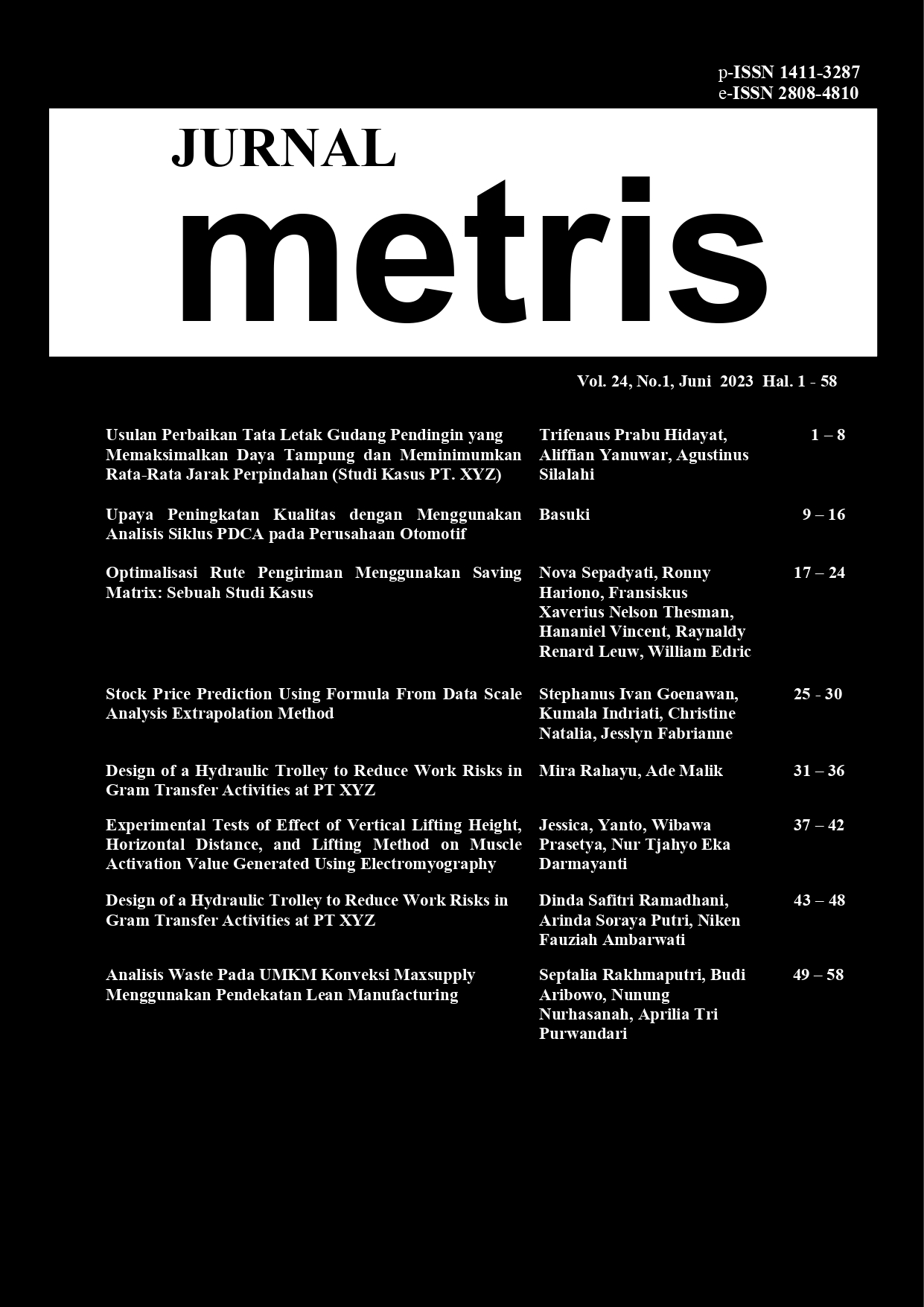Experimental Tests of Effect of Vertical Lifting Height, Horizontal Distance, and Weight Load Lifting Method on Muscle Activation Value Generated Using Electromyography
DOI:
https://doi.org/10.25170/metris.v24i01.4563Keywords:
Manual Lifting, Electromyography, Combination of Lifting Factors, Level of Muscle ActivationAbstract
In industry, manual lifting activities certainly involve muscles and generate risks if done improperly. There are problems in the form of complaints from industrial workers on manual lifting activities that are carried out in a less ergonomic manner. This study aims to determine the effect of lifting factor variables on the resulting level of muscle activation. In this case, three factors are used, namely the lifting method factor, the horizontal distance factor, and the vertical distance factor, each of which has two factor levels to produce eight combinations of lifting factors. Randomization was carried out on research subjects totalling 10 people. Previous research that has been done manually is by calculating the pulse resulting from a lifting activity according to a specified frequency. In this study, monitoring of muscle activity was carried out automatically using an instrument called Electromyography (EMG) at three points of the hand muscles, namely the biceps brachii muscle, triceps brachii muscle, and brachioradialis muscle. The results of this study indicate the best combination based on the value of muscle activation on the biceps brachii muscle, triceps brachii muscle, and brachioradialis muscle which respectively include combination 2 (M1-H2-V1) with a significance value of 0.002, combination 6 (M2-H2 -V1) with a significance value of 0.000 and combination 2 (M1-H2-V1) with a significance value of 0.013. The resulting combination of the best lifting factors can be used as a reference and recommendations for the ideal lifting posture and conditions for workers in minimizing possible injuries












